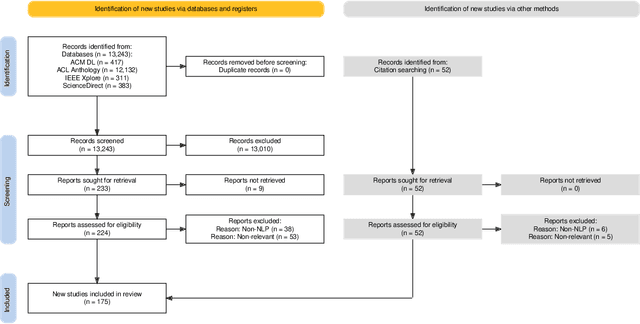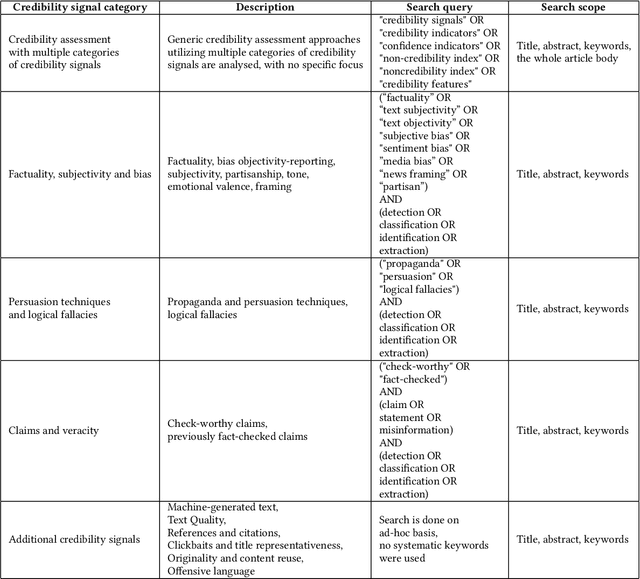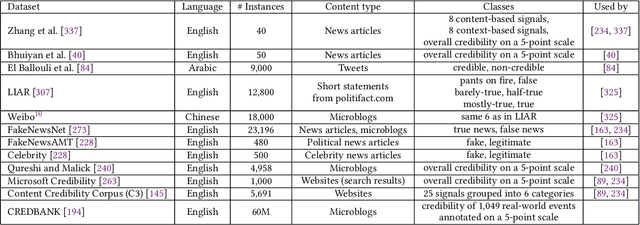Valentin Porcellini
A Survey on Automatic Credibility Assessment of Textual Credibility Signals in the Era of Large Language Models
Oct 28, 2024



Abstract:In the current era of social media and generative AI, an ability to automatically assess the credibility of online social media content is of tremendous importance. Credibility assessment is fundamentally based on aggregating credibility signals, which refer to small units of information, such as content factuality, bias, or a presence of persuasion techniques, into an overall credibility score. Credibility signals provide a more granular, more easily explainable and widely utilizable information in contrast to currently predominant fake news detection, which utilizes various (mostly latent) features. A growing body of research on automatic credibility assessment and detection of credibility signals can be characterized as highly fragmented and lacking mutual interconnections. This issue is even more prominent due to a lack of an up-to-date overview of research works on automatic credibility assessment. In this survey, we provide such systematic and comprehensive literature review of 175 research papers while focusing on textual credibility signals and Natural Language Processing (NLP), which undergoes a significant advancement due to Large Language Models (LLMs). While positioning the NLP research into the context of other multidisciplinary research works, we tackle with approaches for credibility assessment as well as with 9 categories of credibility signals (we provide a thorough analysis for 3 of them, namely: 1) factuality, subjectivity and bias, 2) persuasion techniques and logical fallacies, and 3) claims and veracity). Following the description of the existing methods, datasets and tools, we identify future challenges and opportunities, while paying a specific attention to recent rapid development of generative AI.
Evolution of Detection Performance throughout the Online Lifespan of Synthetic Images
Aug 21, 2024



Abstract:Synthetic images disseminated online significantly differ from those used during the training and evaluation of the state-of-the-art detectors. In this work, we analyze the performance of synthetic image detectors as deceptive synthetic images evolve throughout their online lifespan. Our study reveals that, despite advancements in the field, current state-of-the-art detectors struggle to distinguish between synthetic and real images in the wild. Moreover, we show that the time elapsed since the initial online appearance of a synthetic image negatively affects the performance of most detectors. Ultimately, by employing a retrieval-assisted detection approach, we demonstrate the feasibility to maintain initial detection performance throughout the whole online lifespan of an image and enhance the average detection efficacy across several state-of-the-art detectors by 6.7% and 7.8% for balanced accuracy and AUC metrics, respectively.
 Add to Chrome
Add to Chrome Add to Firefox
Add to Firefox Add to Edge
Add to Edge